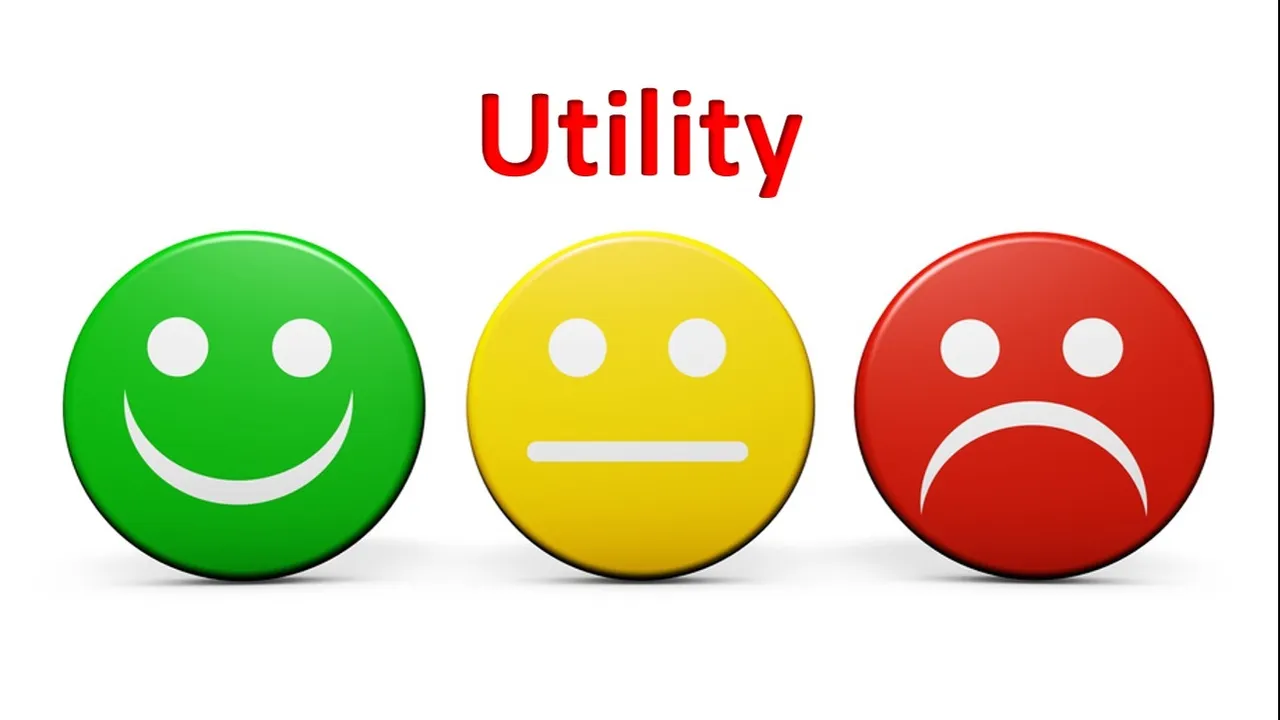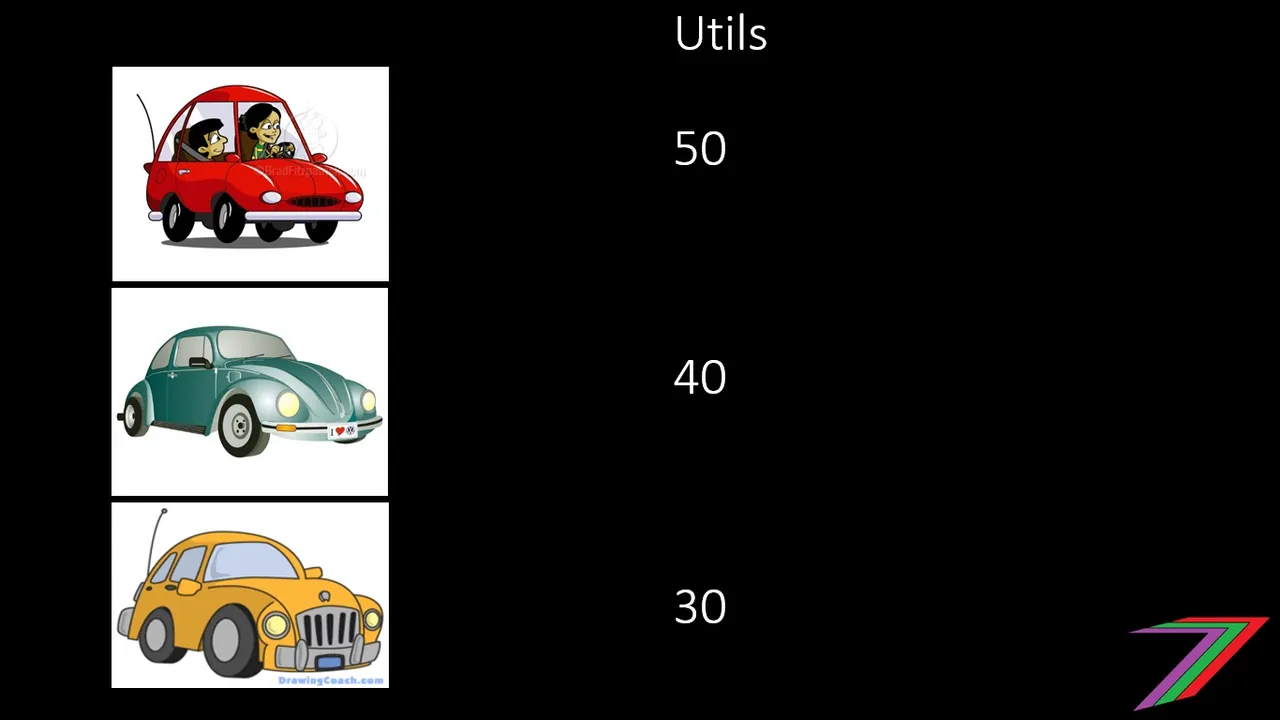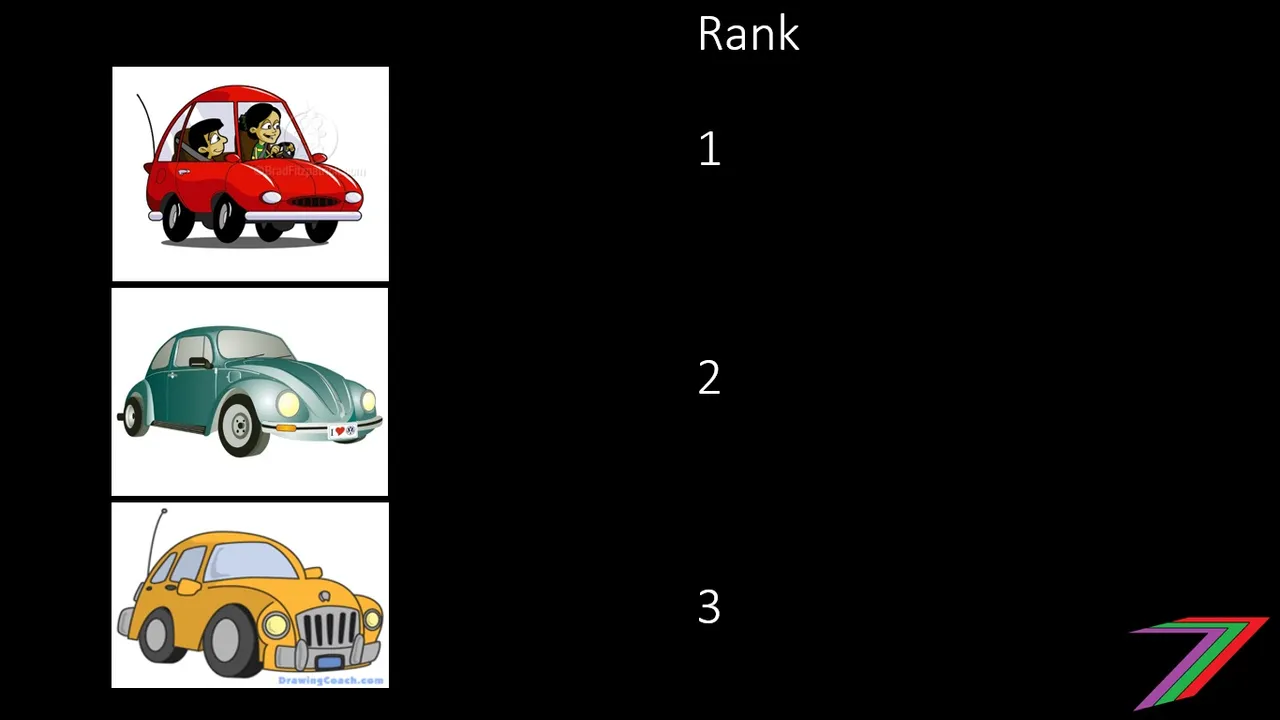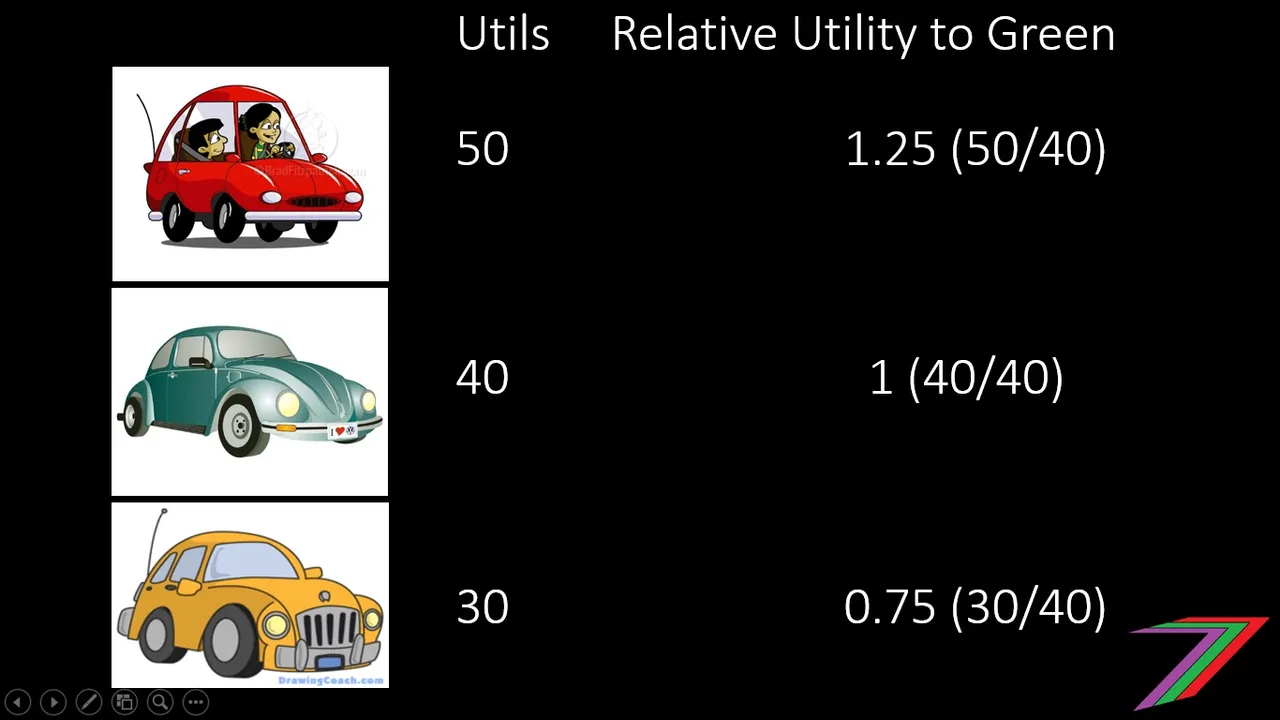
What is utility?
Utility is a term used by economists to describe the measurement of "satisfaction" that an individual experiences from any good, service or event (Building Queensland). Utility can be used to determine the extent a person enjoys an activity such as playing a game of tennis, or going to the theatre to watch a musical.
Utility maximising
Economists often assume that people behavour in order to maximise their own utility. For example, if a person has a choice between a banana and an apple and that person gains more satisfaction from eating bananas, the person will choose to eat the banana rather than the apple. If the person has to pay for the banana and the apple is free, the person may now choose the apple. This will decision will depend on the person’s budget, the price of the banana and the difference in utility they receive from eating the banana compared to the apple.

Positive and negative utility
Utility can be positive or negative. Something that provides you with satisfaction such as watching the next thrilling season of Supernatural, provides positive utility, what are those Winchester boys up to this time? Something that provides you with negative utility such as slipping on a banana skin, provides negative utility. People would pay more to watch the TV show ‘Supernatural’. Hence, the reason why people buy the show on DVDs. People would pay money to avoid slipping on banana skins. Hence, the reason people buy rubbish bags and brooms.

Bounded Rationality
People do not always know what they want. They do not know what will give them the most satisfaction as they lack perfect information regarding every alternative. It is assumed people will either make a decision based on the information they have or acquire more information. If a decision is made with the existing information, the concept of satisficing might be applied. Satisficing involves making a choice that meets just the basic requirements. For example, if a person is very hunger and they have a choice of plain bread or mysterious substance X. Plain bread may not taste great but will solve your hunger problem. Mysterious substance X could solve your hunger problem and taste better but we don’t know that for sure. Instead of making a choice, the person might want to investigate what substance X actually is. Is an investigation worth the time and effort?

Measuring utility
How do we measure utility? Here are three suggested approaches to measuring utility. They are as follows:
- Cardinal approach
- Ordinal approach
- Relative utility approach
Cardinal approach
Cardinal approach involves assigning values to utility obtained from goods, services, and activities. These values are measured in ‘Utils’. Utils do not have a universally clearly defined value but have more of an intrinsic value to each individual. Whatever decisions provide the person with the highest value in Utils will be selected. A weakness of the cardinal approach is that utility cannot be compared between different people. I may place a value of 10 Utils on spending a day at the park and 15 Utils on spending a day at the beach. Chris may place a value of 200 Utils on spending a day at the park and 120 Utils on spending a day at the beach. This does not mean that Chris likes the beach 8 times more than I do.
Which car gives me the most utility (Cardinal Approach)?

Ordinal approach
The ordinal approach does not require an assignment of value but instead ranks goods, services, and activities based on utility. Whatever ranks higher is preferred. This is simpler than the cardinal approach and assignment of an exact value is not necessary. Most economists prefer the ordinal approach to the cardinal approach. The ordinal approach like the cardinal cannot be used to compare utility between two different people.
Which car gives me the most utility (Ordinal Approach)?

Relative utility approach
This is personally my favourite approach as it has elements of both cardinal and ordinal approaches. Initially, Utils are assigned to each good, service or activity. Then they are compared with each other. For example, I placed a value of 10 Utils on spending a day at the park and 15 Utils on spending a day at the beach. My relative utility of spending a day at the beach to a day at the park is 1.5 (15/10 = 1.5). Chris placed a value of 200 Utils on spending a day at the park and 120 Utils on spending a day at the beach. His relative utility of spending a day at the beach to a day at the park is 0.6 (120/200 = 1.5). Relatively utility approach makes it possible to make comparisons across different people. As we are comparing ratios instead of ambiguous utility values.
Which car gives me the most utility (Relative Utility Approach)?

Conclusion
Utility is a very important concept in economics and one that I make reference to in many of my posts. It is important to determine what drives human behaviour. Understanding how utility functions provides us with great insight into human behaviour.
I hoped you enjoyed my first post in my economics concept series, I have many more to come. Check out this month’s schedule using the following link: https://steemit.com/economics/@spectrumecons/spectrum-economics-line-up-for-november








